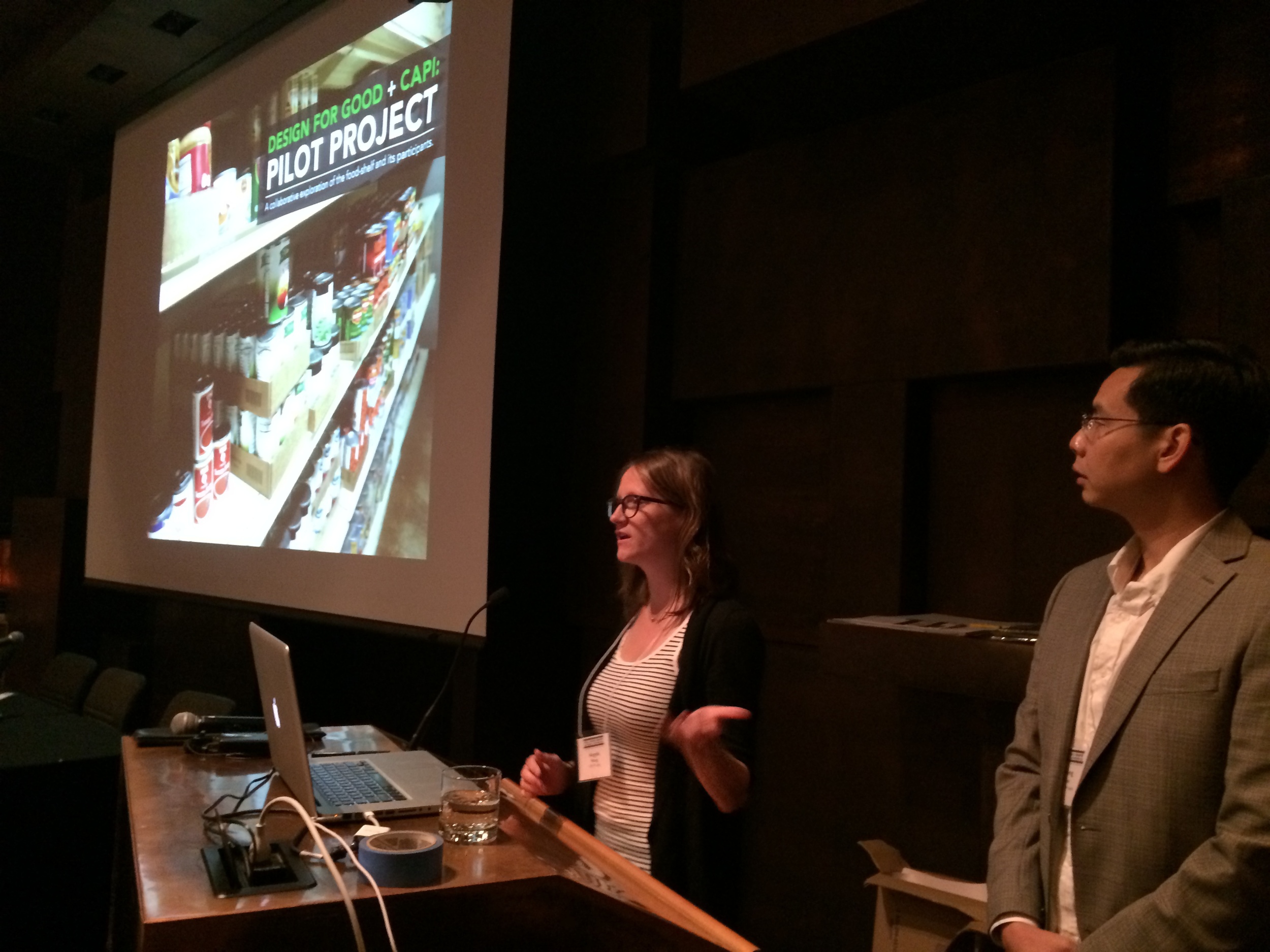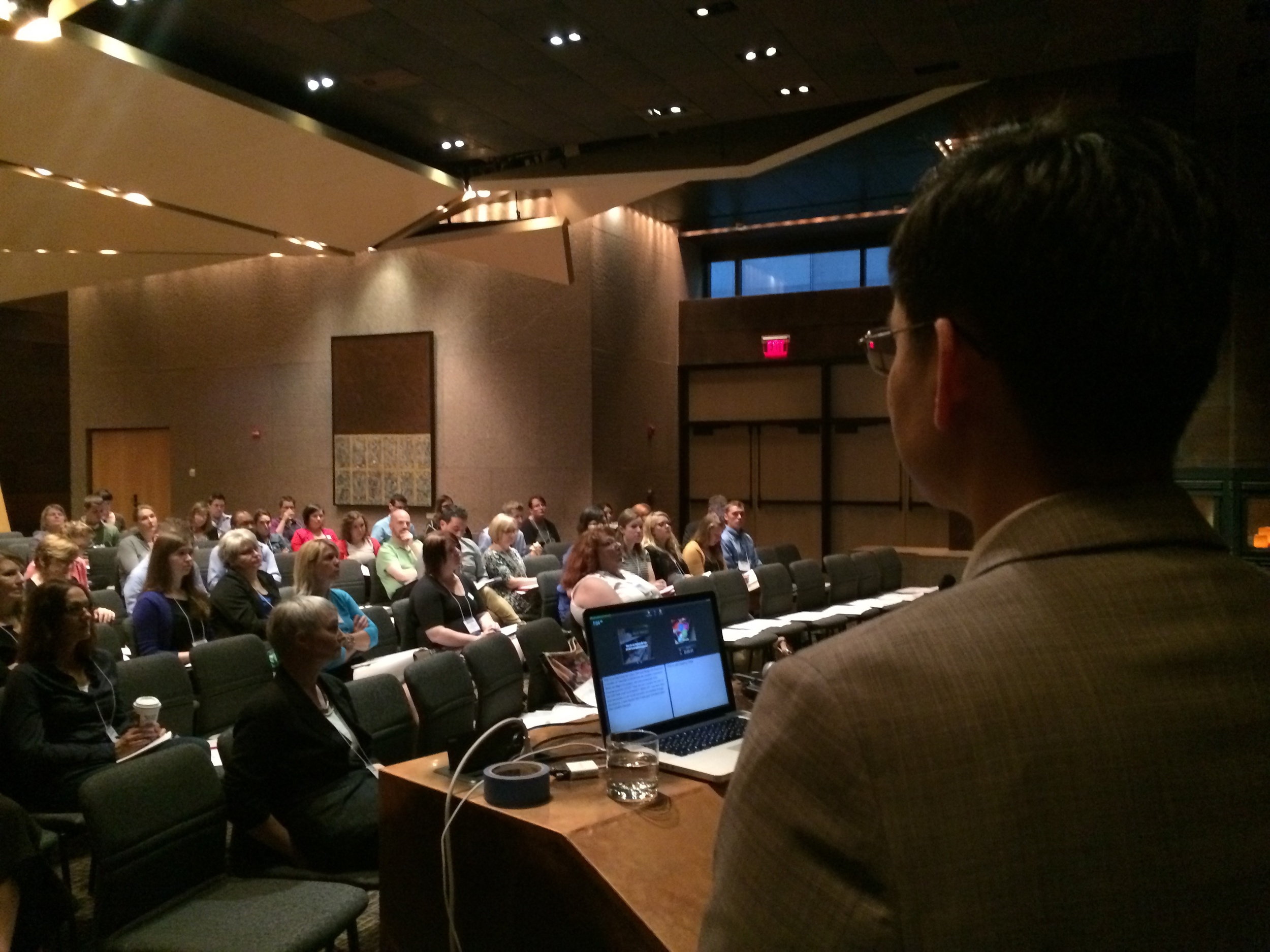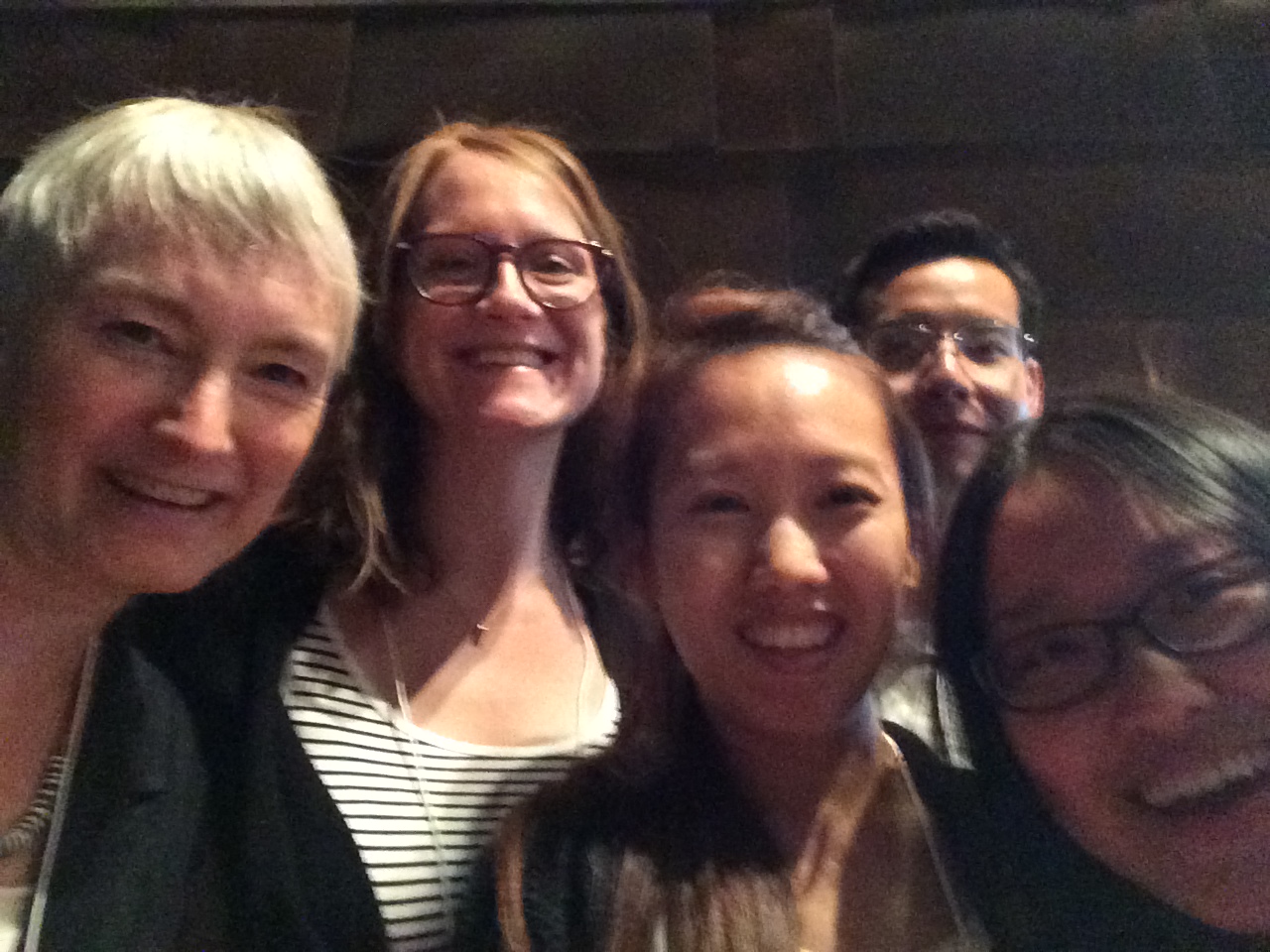Right, Taylor?
Social innovation through empathy
Our AIGA MN Design for Good pilot project team presented last week Thursday at the 2014 Nonprofit Leadership conference. Our 7:30am breakout session was well-attended by 65 people at a sold-out conference of 500 attendees. We had excellent participation (particularly commendable at that early hour) and great follow-up questions, including one about funding. The big question is: how do you get funders—who are typically funding particular solutions to issues they deem worthy—to fund a more authentic problem-finding or problem-defining process? Some funding organizations are starting to realize that their models may need some adjusting, including local giant Bush Foundation, who has a history of strategic philanthropy.
“What’s right about strategic philanthropy is a clear focus on achieving results,” said the center’s executive director, Aaron Dorfman. “What’s wrong is its oversimplistic, linear thinking about how change happens in the world.”
After years of not accepting proposals from organizations, the Bush Foundation is shifting directions, and is open to trying new methods of identifying innovative community problem-solving. It's exciting to see things change on this end, so that problem-solving processes like design thinking may be able to engage and enable organizations to identify, prototype, and evaluate the effectiveness of solutions focused on the real problems presented by community members.
A new class partnership for a change
This past year I've worked with Neerja Mehta, Director of Community-based Research at CURA and Sandy Wolfe Wood, Director of AIGA MN's Design for Good initiative to propose a class partnership between their respective organizations and the College of Design. Picture this: Neeraj comes in close contact with community organizations in need of design skills, often centered around public policy issues, and Sandy works to make Design for Good a sustainable practice model for practicing and soon-to-be-practicing designers. This interdisciplinary class fosters connections between designers, public policy graduate students, and community clients, engaging them in a design-process in order to research, prototype, and test their solutions with actual "users" in the community. Sound great? I think so too. Let's see if Design Ignites Change agrees!
Design/ed in MN
Design. Education. Minnesota. To these three I remain true.
Lately I've been having many discussions about the state of design and (design) education in Minnesota. I'm finding myself in endless meetings (HELP!) where our discussions circle around the changes happening or needing to happen in these worlds, respectively. In academia, they're trying to define design, and its many spin-offs: design thinking, social impact design, user experience design, experience design, interactive/-tion design, service design, etc. In industry, they're working to keep up with the demands and reframe their services to fulfill these needs, so as to keep their clients happy and themselves in business. And me? I just want to do. I want to teach our students skills that are endlessly applicable, in an increasingly medium-agnostic world. I want to create experiences that are sustainable, usable, and enjoyable. And I want to be a loving wife, supportive mom, and engaging friend while I do it.
Couple this with wanting to feel like I'm making progress on something (not some idea of a thing), and you get this long-overdue website. I've made it live—even tweeting it!—to be sure I'm held accountable to making timely progress. There's a lot going on in design and education in Minnesota, and I want to be in the middle of it. I just don't want to be stuck.
Daily discipline
The thought of a daily routine can be depressing or it can be energizing. Very rarely does it fall somewhere in-between.
As a second-time new mom, I've been on semi-maternity leave since March 7 when I wrapped up an intense 7-week semester at the U. Although I was still finishing up some contract work, I had a minimal daily routine. Now, with a new baby in tow, I've got a very well-defined routine: feed, keep awake, put to sleep. It's incredibly stimulating and conducive to getting work done. (Not).
Rather than sit around watching bad daytime television while my two-year old is at daycare or Grandpa's (THANK YOU!) , I'm going to commit to using this time to put renewed focus on my discipline and truly practice what I preach. Instead of thinking about things, I'm going to do them—or at least write about them. Instead of worrying about putting forth the perfect words or pixels, I'm going to publish at all stages. Hopefully, instead of thinking I did nothing all summer, I'll see the progress I've made and perhaps know a little bit more about where I'm headed in the future.
Stay tuned to see if this new routine is one I loathe, or one I love. I'm hoping it's the latter.




